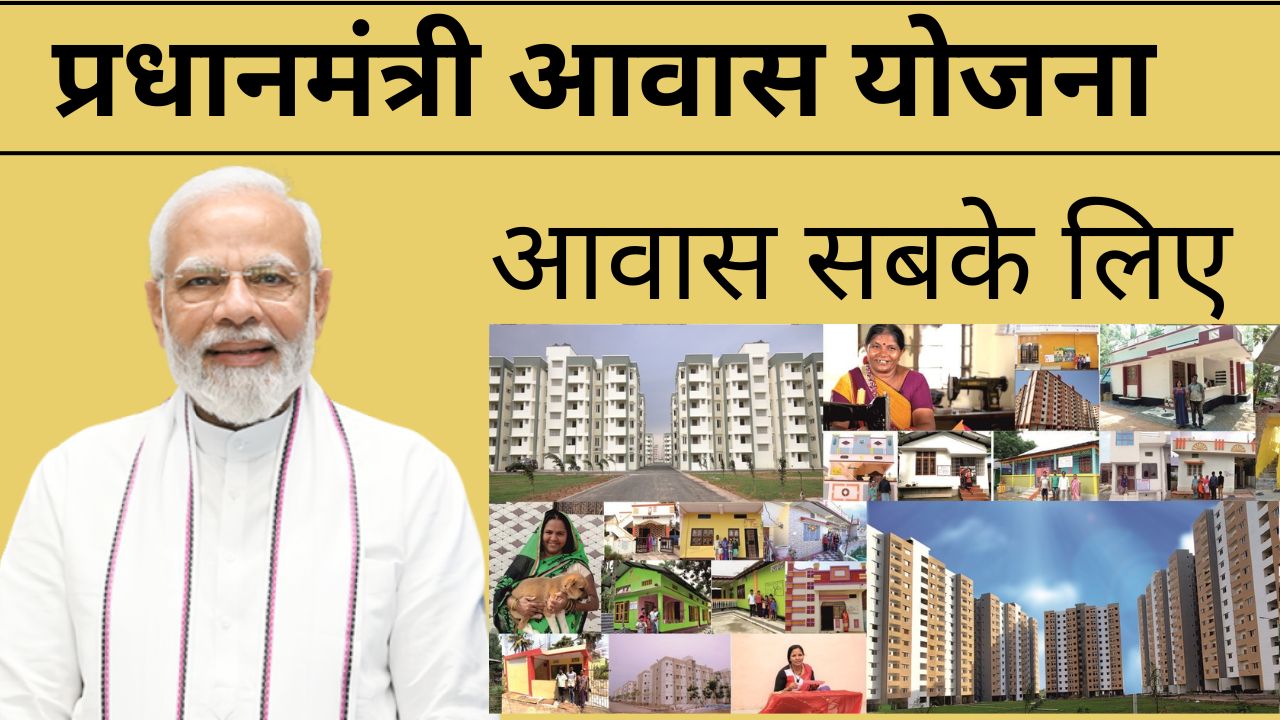Pradhan Mantri Awas Yojana (PMAY2.0) is a flagship initiative by the Government of India aimed at providing affordable housing for all. This article explores its objectives, features, and impact.
Introduction to Pradhan Mantri Awas Yojana (PMAY2.0)
Launched in June 2015 by the Government of India, the Pradhan Mantri Awas Yojana (PMAY) is a revolutionary scheme aimed at addressing the housing needs of India’s economically weaker sections (EWS), low-income groups (LIG), and middle-income groups (MIG). It aspires to provide “Housing for All” by 2024, ensuring every eligible citizen can own a home.
With two distinct components – PMAY-Urban (PMAY-U) and PMAY-Gramin (PMAY-G) – this scheme targets urban and rural housing challenges, respectively.
Objectives of PMAY(2.0)
- Provide affordable housing for economically weaker sections.
- Promote urbanization by ensuring planned and sustainable development.
- Reduce homelessness and improve the quality of life in rural and urban areas.
- Empower women, as the scheme mandates house ownership in the name of women or joint ownership.
- Facilitate access to institutional finance for home construction or purchase.
Key Features of Pradhan Mantri Awas Yojana
1. Credit-Linked Subsidy Scheme (CLSS):
The CLSS offers interest subsidies on home loans, making housing loans more affordable for beneficiaries.
- Interest subsidy:
- EWS/LIG: Up to 6.5% for loans up to ₹6 lakh.
- MIG-I: Up to 4% for loans up to ₹9 lakh.
- MIG-II: Up to 3% for loans up to ₹12 lakh.
2. Affordable Housing Through PPP:
The scheme encourages private sector participation to build affordable housing units under Public-Private Partnerships (PPP).
3. Focus on Women Empowerment:
The scheme prioritizes house ownership in the name of women, ensuring gender equity and social empowerment.
4. Eco-Friendly Technology:
PMAY promotes green and sustainable construction technologies to minimize environmental impact.
5. Subsidy for Slum Redevelopment:
Urban slum dwellers are offered affordable housing through redevelopment projects.
PMAY-Urban (PMAY-U)
The urban component of PMAY aims to address housing shortages in cities and towns, focusing on:
- In-situ rehabilitation of slum dwellers using land as a resource.
- Affordable housing partnerships with private developers.
- Subsidies for home construction under CLSS.
Progress of PMAY-U:
As of 2023, over 1.2 crore houses have been sanctioned under PMAY-U, with more than 70 lakh houses already completed and handed over to beneficiaries.
PMAY-Gramin (PMAY-G)
The rural component aims to provide “pucca houses” to economically weaker families in villages. This initiative focuses on improving the living standards of rural households by:
- Providing financial assistance of up to ₹1.2 lakh per unit.
- Incorporating sustainable building practices and locally available materials.
Achievements of PMAY-G:
- Over 2 crore houses have been constructed in rural India.
- Introduction of Direct Benefit Transfer (DBT) ensures transparency and efficiency in fund disbursement.
Eligibility Criteria for PMAY
- For EWS/LIG Households:
- Annual household income: Up to ₹3 lakh (EWS) and ₹6 lakh (LIG).
- Must not own a pucca house anywhere in India.
- For MIG Households:
- Annual household income: Up to ₹12 lakh (MIG-I) and ₹18 lakh (MIG-II).
- Must meet income and property criteria.
- Other Conditions:
- Beneficiary families include husband, wife, and unmarried children.
- Women ownership/joint ownership is mandatory in urban areas.
How to Apply for PMAY
Online Application:
- Visit the official PMAY website (pmaymis.gov.in).
- Select the applicable scheme (Urban or Gramin).
- Enter Aadhaar details and verify eligibility.
- Fill in personal, income, and housing details.
- Submit the form and note the application reference number.
Offline Application:
Beneficiaries can apply through Common Service Centers (CSCs) by filling out the form and paying a nominal fee.
Impact of PMAY
- Economic Growth: The scheme has boosted the construction sector, generating employment opportunities.
- Poverty Alleviation: Providing affordable housing has significantly improved living conditions for millions.
- Social Empowerment: Ownership in women’s names promotes gender equality and family security.
- Sustainability: Adoption of eco-friendly materials and practices contributes to sustainable development.
Challenges and the Way Forward
Despite its success, PMAY faces challenges such as delays in project execution, availability of land in urban areas, and ensuring that subsidies reach the intended beneficiaries. Going forward, leveraging advanced technologies, public-private collaborations, and community participation will be key to achieving the “Housing for All” mission.
FAQs on Pradhan Mantri Awas Yojana
Q1: What is the main objective of PMAY?
The primary goal of PMAY is to provide affordable housing to all eligible citizens by 2024.
Q2: Who can apply for PMAY?
Economically weaker sections (EWS), low-income groups (LIG), and middle-income groups (MIG) who do not own a pucca house are eligible to apply.
Q3: How can I check my PMAY application status?
You can check the status by visiting the official PMAY website and entering your application reference number.
Q4: Is there any subsidy available under PMAY?
Yes, under the Credit-Linked Subsidy Scheme (CLSS), beneficiaries can avail of interest subsidies on home loans.
Q5: Are there different schemes for rural and urban areas?
Yes, PMAY-U caters to urban areas, while PMAY-G is focused on rural housing.
